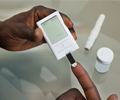Tag Archives: diabetes
April 2019 Br J Cardiol 2019;26:48–9 doi:10.5837/bjc.2019.014
Should we be targeting people with diabetes when screening for atrial fibrillation?
Angela Hall, Andrew Mitchell
| Full text
September 2018 Br J Cardiol 2018;25(suppl 2):S3 doi:10.5837/bjc.2018.s06
Introduction
Naveed Sattar
| Full text
September 2018 Br J Cardiol 2018;25(suppl 2):S19–S26 doi:10.5837/bjc.2018.s10
Optimising cardiovascular risk reduction in diabetes
W David Strain
| Full text
March 2018
News from the Cardiorenal Forum 12th Annual Scientific Meeting – Improving treatments in cardiorenal patients
Fazlullah Wardak and Rosie Kalsi
| Full textOctober 2015 Br J Cardiol 2015;22:138–142
News from the European Society of Cardiology Congress 2015
BJCardio Staff
| Full textAugust 2015 Br J Cardiol 2015;22:88
London welcomes the 2015 ESC Congress
Dr Sarah Clarke
| Full text
July 2015 Br J Cardiol 2015;22:(3) Online First
Book review
Gielen S, De Backer G, Piepoli M, Wood D
| Full text
December 2014 Br J Cardiol 2014;21:128–30 doi:10.5837/bjc.2014.031
Hypoglycaemia: patient inconvenience or serious cardiovascular risk?
Vidya Srinivas, Kashif Kazmi, Ketan Dhatariya
| Full text

